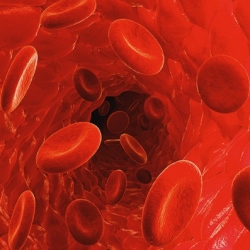
Researchers have developed a portable machine that can treat sepsis by filtering pathogens from blood, and it is nearing the point where it could be ready for human clinical testing. Recent tests have shown that the device works in a similar way to the dialysis machines already used to filter the blood of patients with kidney failure.
It not only efficiently removes pathogenic material from the bloodstream but also works in concert with antibiotics to prevent a harmful immune response that can lead to organ malfunction and even death.
The project, led by researchers at Harvard University’s Wyss Institute for Biologically Inspired Engineering, is part of an effort by the U.S. defense department to design a portable machine for treating soldiers in the field. But sepsis is not just a problem in war zones. There is currently no effective therapy, and the disorder kills millions of people around the world every year.
Sepsis happens when an infection of just about any kind, such as pneumonia or salmonella, spreads through the body via the bloodstream, triggering a system-wide inflammatory immune response. This reaction affects the whole body and can cause organ malfunction.
Doctors treat septic patients immediately with an antibiotic that kills a broad range of bacteria, and they use cell culture to try to figure out the identity of the pathogen responsible for the infection so they can target it with more specialized drugs. But that can take days, if it even works. In more than half of cases the identity of the particular microbe can’t be determined.
The new device removes pathogens regardless of their identity. It does this by using a genetically engineered blood protein that can bind to more than 90 varieties of harmful micro-organisms, including bacteria, fungi, viruses, and parasites. It also binds to toxins that certain bacteria secrete.
The researchers coated commercially available polymer fibers, like those already used in the clinic to filter blood during dialysis, with the engineered protein. As blood runs through the machine, pathogens and bacterial toxins stick to protein-coated fibers. Filtered blood is returned to the body. The Wyss researchers say the machine is capable of filtering the entire volume of blood from a person in 30 minutes, and in practice the treatment would involve multiple cleansing rounds over the course of several hours.
Crucially, says Michael Super, a senior staff scientist at the Wyss Institute, recent tests of the new prototype in rats show that the technology not only clears live pathogens but also toxins that certain kinds of bacteria release into the bloodstream when they die.
This may be why a septic patient’s condition can worsen even as antibiotics are killing the bacteria at fault. The toxic material, which remains in the bloodstream, “may be part of why the body overreacts to sepsis,” says Super. “If you can remove it, you can quiet down the immune response
